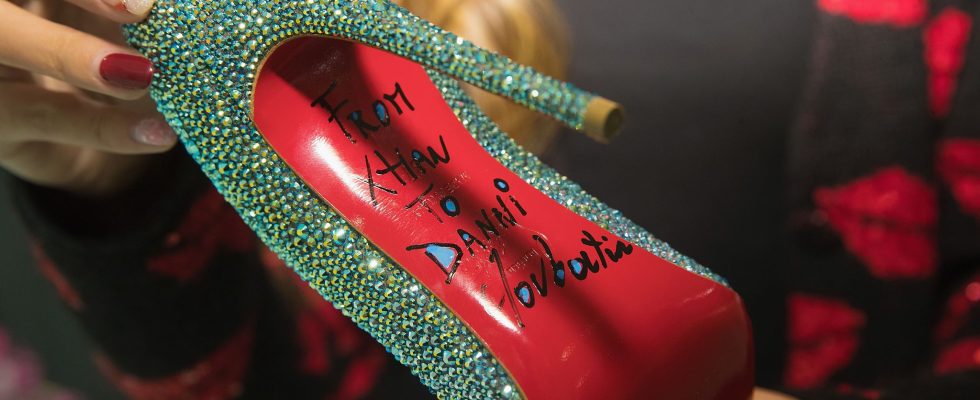In the Palaeolithic, it was the first color mastered by man. Red ocher is obtained from ferruginous soils, such as that of Siena, and is used to draw horses, bison and other buffaloes on the walls of caves, which continue to amaze us twenty thousand years later. Homo sapiens also uses it to paint his body and the bed of the deceased as the ultimate protection on their journey to the afterlife.
Ultra-present from ancient Rome to the Middle Ages
In ancient Rome, vases and mosaics also bear witness to its omnipresence on the togas of emperors. At the time of Caesar, we extracted from the madder flower a red that bears his name. As for vermilion, it is obtained from an insect, kermes vermilio, an oak parasite, once reduced to powder. Appearing at the same time, one and the other will compete for centuries, until printing their mark on the aesthetics of the Middle Ages.
For dyers, red stands out as an essential, basic colour. The clothes of emperors and great ecclesiastics are adorned with it. The pope’s cassock is no exception and painters use it to depict deities. Anything red is beautiful, and vice versa, so much so that red and beautiful are practically synonymous.
The most beautiful adornments for women are based on garnet, ruby or carnelian. The peasant women, who have only a ceremonial dress in their closet, have no other color than this to put on and marry with it.
From the 6th to the 14th century, color became the symbol of power as of love, of virility as of femininity. And brings good luck on New Year’s Eve. Red is magic.
American accents
The conquest of America introduces European countries to another insect that the peoples of the continent have long used to dye their clothes and the rest: the dactylopius coccus, a parasite that lives on cacti. It will enrich both the conquistadores and the palette of reds which today has a good fifteen shades. Those that pull towards pink or orange, dark, gray, purplish or brown. And none of this is free. The dyes are expensive, even though the collection of mealybugs is carried out by hundreds of slaves.
Everything that is expensive is chic, that’s why the aristocracy seizes it. We remember the heeled shoes worn by Louis XIV. At court, the finest marquises and the wealthiest countesses wore the same shoes, so they were called “red heels”.
In the street, prostitutes wear it as a distinctive sign
Depending on the shade, red symbolizes what we want. Thus, from the 15th century, its darkest, almost dull hue becomes the expression of immorality and the embodiment of sin. Thus are represented the devil and Mary Magdalene. Or the prostitutes, who wear a characteristic piece of clothing so that they can be distinguished in the street from honest women. A red lantern indicates the entrance to brothels. And when it comes to assigning colors to the seven deadly sins, carmine wins three Oscars: pride, anger and lust.
The simple-minded are in turn required to wear at least one piece of red cloth, and clearly visible. The color becomes so connoted with evil that the pope himself decides to change his cassock, which passes to white, symbol of purity.
The Age of Enlightenment will blush the faces of the European aristocracy that the reign of Louis XIV had forced to pale white. From now on, gentlemen and gentlewomen should no longer be seen without rouge on the cheekbones and on the lips. We therefore travel with small boxes of make-up and we no longer hesitate to get a makeover in public. All genders!
Purple continues to dress the greats of this world
One fashion chases the other. After the Revolution, which brought red to its peak, the ladies of good society again left this shine to women of bad lives. According to the song, the flag of the revolutionaries is tinged with the blood of the workers, while purple continues to dress the greats of this world. In 1917, in Russia, the Soviets seized the Winter Palace and the red. Forty years later, Mao publishes a little book that will have the color of the biggest bestseller of all time. Communist China is as red as Imperial was yellow.
On the fashion side, the first couturier to make it his favorite color was Valentino, who in 1959 baptized his first carmine dress “fiesta”. Since then, not one of his collections without a scarlet model. We know the red soles of Louboutin which, since 1991, classifies a woman, whether she is a libertine or a minister, or both. O scandal! But as Evariste sang in May 1968: “Leave the fear of red to horned beasts.”
Red, story of a color, Michel Pastoureau (Seuil).
The red, collective (Hazan)
Colors of the world, Jean-Philippe and Dominique Lenclos (Le Moniteur)
